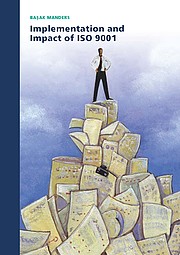Implementation and Impact of ISO 9001 Defended on Friday, 30 January 2015
The ISO 9001 quality management standard has been implemented by more than one million organizations in 187 countries since its introduction in 1987. A newer version of ISO 9001 is planned to be introduced in 2015. Even though it is widely used by organizations to gain both operational and market benefits, the studies on the impact of ISO 9001 report mixed findings. Therefore, the aim of this dissertation is to find out what is the impact of ISO 9001, and to better understand the differences in current literature.
The findings demonstrate that ISO 9001 leads to operational and market benefits in the majority of cases. We also show that the benefits gained from ISO 9001 differs depending on the length of the period since certification, standard version, geographic location, industry sector, and company size. We further demonstrate that national differences, specifically the level of economic development and national culture, impact the performance benefits of ISO 9001. Moreover, we find that not all of the employees in a company use ISO 9001 in their daily work. Having a positive attitude towards ISO 9001 usage, being aware of ISO 9001, believing that ISO 9001 is useful and easy to use, and feeling responsible for ISO 9001 discriminated employees that did participate in ISO 9001-related practices from those that did not.
Together, these three chapters illustrate that the relationship between ISO 9001 and business performance is not as straightforward as it is often assumed. Our findings indicate that the implementation and the impact of ISO 9001 can be studied and explained at three different levels: Country level, company level and employee level.
Keywords
ISO 9001, ISO 9000, quality management, implementation, impact, company performance, employee involvement, meta-analysis, explorative case study













